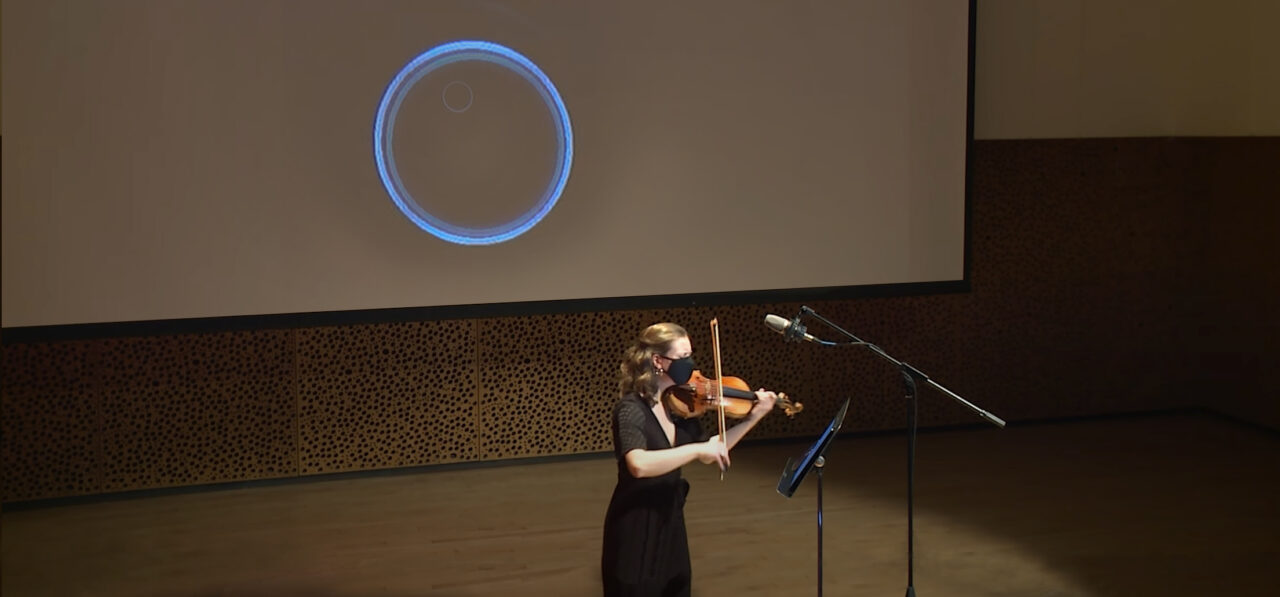Musically, the score is designed as a guided improvisation replacing expressive text with an abstracted narrative for the performer’s personal expression and spontaneity. The score combines traditional classical notation with text-based instructions creating a unique collaboration with the performer to shape the work each time it is performed. This blend of pre-determined elements and open-ended improvisation reflects the journey from the rigid, structured emptiness of the void to the fluid unpredictable climax filled with sensory input. The start of the piece is extremely subtle, bowing on the chinrest so that the only audible sounds are the electronics. This begins to build up as volume and texture increases over the first half. The climax of the piece uses extended techniques with intense sounds such as bowing behind the bridge to create an almost paralyzing sensation that captures the fear of the pandemic and our collective health. This heightened tension expresses the altered perceptions of time in this internal conflict that also reflects the emotional intensity of the auras I experienced as a child.
Electronically, there is a microphone for the violin and a lavalier microphone to catch the breath of the performer. This is connected to a MAX patch with both audio and visual components. The Jitter is a circle which is audio-responsive: the louder the sound, the larger the circle is, a simple and effective way to represent the breaths from the performer. Audio-wise, the system is mainly a signal chain with several effects like delay, ringmod, and reverb and sent through a 4-channel speaker system.
